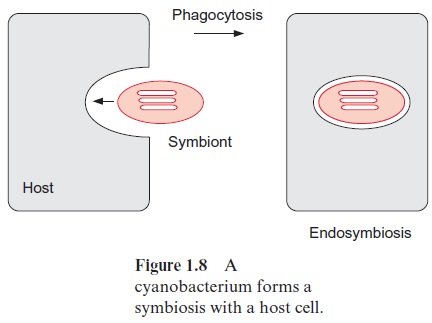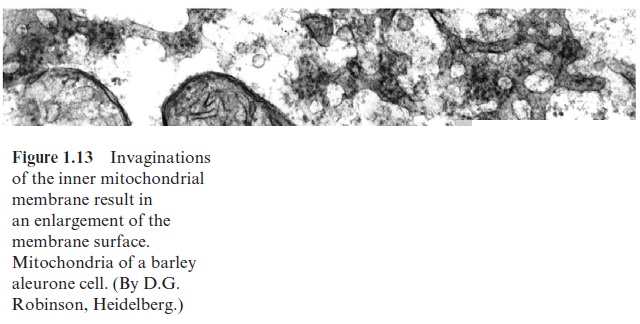Chapter: Plant Biochemistry: A leaf cell consists of several metabolic compartments
Mitochondria also result from endosymbionts
Mitochondria also result from endosymbionts
Mitochondria are the site of cellular respiration where substrates are oxi-dized for generating ATP . Mitochondria, like plastids, multiply by division and are maternally inherited. They also have their own genome (in plants consisting typically of a large circular DNA and several small circular DNAs, so-called “minicircles”) and their own machinery for replication, gene expression, and protein synthesis. The mitochondrial genome encodes only a small number of the mitochondrial proteins (Table 20.6); most of the mitochondrial proteins are encoded in the nucleus. Mitochondria are of endosymbiotic origin. Phylogenetic experiments based on the comparison of DNA sequences led to the conclusion that all mito-chondria derive from a single event in which a precursorproteobacterium entered an anaerobic bacterium (probably an archaebacterium).

The endosymbiotic origin (Fig. 1.8) explains why the mitochondria are enclosed by two membranes (Fig. 1.12). Similar to chloroplasts, the mito-chondrial outer membrane contains porins that render this membrane permeable to molecules below a mass of 4,000 to 6,000 Dalton, such as metabolites and nucleotides. The permeability barrier for these compounds and the site of specific translocators is the mito-chondrial inner membrane. Therefore the intermembrane space between the inner and the outer membrane has to be considered as an external com-partment. The “protoplasm” of the mitochondria, which is surrounded by the inner membrane, is called the mitochondrial matrix. The mitochondrial inner membrane contains the proteins of the respiratory chain . In order to enlarge the surface area of the inner membrane, it is invaginated in folds (cristae mitochondriales) or tubuli (Fig. 1.13) into the matrix. The membrane invaginations correspond to the thylakoid membranes, the only difference is that in the mitochondria these invaginations are not separated from the inner membrane to form a distinct compartment. Similar to chlo-roplasts, the mitochondrial inner membrane is the site for the formation of a proton gradient. Therefore the mitochondrial intermembrane space and the chloroplastic thylakoid lumen correspond functionally.


Related Topics